QuestionQUESTION: My farrier and the trainer are not in agreement and I am not familiar enough with corrective shoeing to have an informed opinion, so I am hoping to get some more information!
A bit of history: Daughter's Thoroughbred doesn't have the world's best feet. He has thin walls and the right fore is lower in the heel than the left fore. Between my inexperience and the former farrier, he has ended up with collapsed heels on the R fore and was lame. So, new farrier comes and puts him in the Natural Balance shoes and the horse isn't lame any more. The heels are all starting to grow, but the R fore is still a lot lower that the L.
I took the horse into the vet and had all 4 feet X-rayed, using the cool new digital machine. WOW! It's so nice to actually be able to see what is happening in the hoof. The vet put the measurements on the pictures, made his recommendations as to the degree we need to be lifting and I rang the farrier.
Farrier comes out and doesn't like to use the wedges (trainer really likes them) because he feels there is always going to be some degree of movement between the shoe, the wedge (I assume that's a pad of some sort?) and the hoof. So, he builds up the heel and the wall (for support) with the Equilox stuff. We don't lift the full 5 degrees recommended by the vet as it would be too much all at once, but we did get 3 degrees. Horse is happy, not lame at all. Back feet also need some lift, and he is recommending a shoe with slightly raised heels, but that we would wait until the next shoeing, again the reasoning being not too much all at once. No longer in the Natural Balance shoes with this new approach.
So, I call the trainer with my report and what we have done. Dead silence and then "that's unfortunate." She then proceeds to tell me that the Equilox causes all sorts of problems, that the wedges never move and that my farrier should have lifted the back feet as well as that R front all at once with the wedges.
So, I am back to which is the preferred method? The trainer said that the Americans are brilliant with stuff and have it all worked out with proper shoes, etc. So, I decided to go straight to the source! LOL (We are in Australia. I am an American and she's British.)
I have e-mailed my vet to ask his professional opinion, but any insight would be great. I am trying to educate myself so I can make a good decision.
Thank you so much.
ANSWER: HELLO JACKIE...THANKS FOR YOUR QUESTION...
Have been in these "situations" before !!
First...you've done a GOOD job so far and getting the veterinarian involved.
I'll break it down for you...I have NOTHING vested or involved, except for just caring.
Your farrier is correct...trainer is lost. Stay with what your vet and THIS farrier is saying so far. I DON'T care for NBS shoes. Have applied many correctly and have seen the results down the road. It "helped" your horse...very good!!
Wedges are mostly polyurethane by material and give a "temporary fix". In time, especially your
bigger body'd horses will continue to crush heels and only give a short term comfort.
They WILL compress and allow the heels to move in a bad direction.
Equilox or other acrylics/urethanes will help, as it has for your horse, but should not be used forever. ANY PROSTHETIC no matter what it is, has it's problems later on...human or equine.
Understanding anatomy, Thorobreds/warmbloods are prone to this and many, as yours MAY be,is at
his best right now. Deviation between the angles of the lower limb are mostly congenital
and the rest "man-made" or from injury. As they say: "It is,what it is".
As a performance horse, he may be "peaked" as far as what he can and will do in the future.
Trainers...no matter how experienced will have a quick fix or feel because of years at what they have done, have the answers and are very opinionated over what a vet or farrier has to offer.
They are NOT veterinarians or farriers. Many do not have the years of education and are working from only "trial and error or gut feelings".
Because "something" worked on one or two horses...doesn't make it gospel or a research project!!
Hope I've shed some light...
Thank you and Best to You
Joepaul Meyers,C.J.F.
---------- FOLLOW-UP ----------
QUESTION: Thank you again for your reply. We have only just started down this road with the horse with the idea of correcting the foot to then help take the strain off the body as he is only 10, talented and we want to keep him sound! We do have a plan, but I am wondering how long you feel is "too long" to keep using the artificial heel?
AnswerHEY JACKIE...
Basically...too long in my opinion is after numerous shoeings, your farrier can honestly say
that the heels are at a standpoint where there is NO change. He/she won't see the heels dropping
in a "good/proper direction" Much like after say 3/4 shoeings (an example) the heels are NO better than when you started or the heel buttress seems weak or "weaker" than even before.
Comfortable horses in motion will hit heel first, maybe slightly lateral/medial (inside/outside)
and with weak or crushed heels will constantly compress the artificial build up of acrylic and
for lack of a better word...smash what heel he has.
A farrier HAS TO make a judgement call as to when "enough is enough". Otherwise at 10 yrs. which is not old, the horse's future will be bleak.
I have come in on situations where the horse has been shod and acrylic applied for 18 mo./2 yrs.
and the horse is permanently sore for now on. Too much bruising, concussion and compression for
to long. The horse just could not recover.
Thanks...
Joepaul

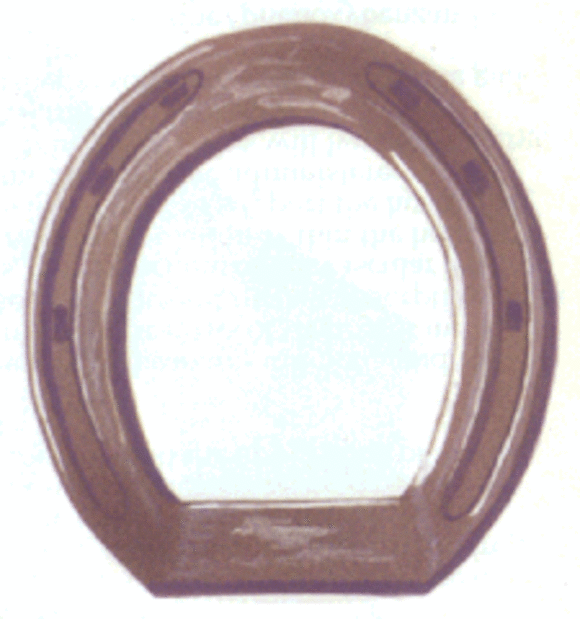 eggbar shoes on horses
Question
bar shoe
hello sir, when can i use egg
eggbar shoes on horses
Question
bar shoe
hello sir, when can i use egg
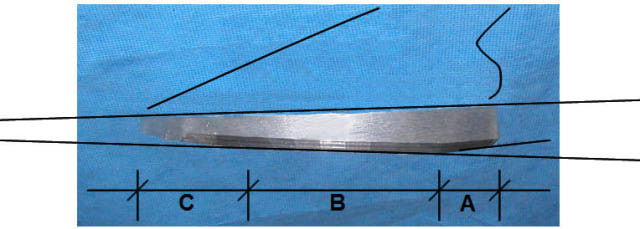 wedge shoes on horses
Question
wedge shoe
hello sir, may i know when t
wedge shoes on horses
Question
wedge shoe
hello sir, may i know when t
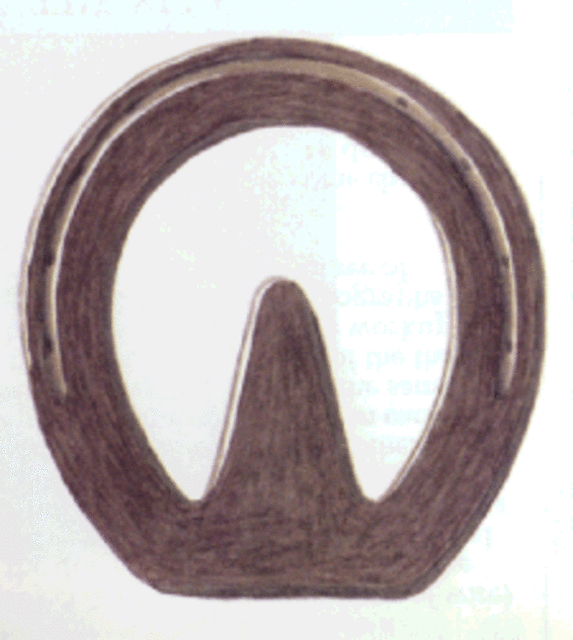 what shoe is this
Question
what shoe
hello sir, may i know the nam
what shoe is this
Question
what shoe
hello sir, may i know the nam
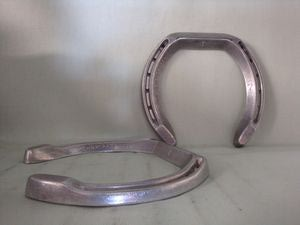 what type of shoe
Question
what type of shoe
hello sir, what type
what type of shoe
Question
what type of shoe
hello sir, what type
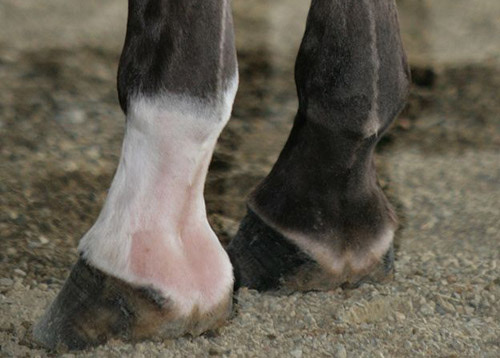 white legged horses - cracked heels
Question
white legged
hello, may i know why whit
white legged horses - cracked heels
Question
white legged
hello, may i know why whit